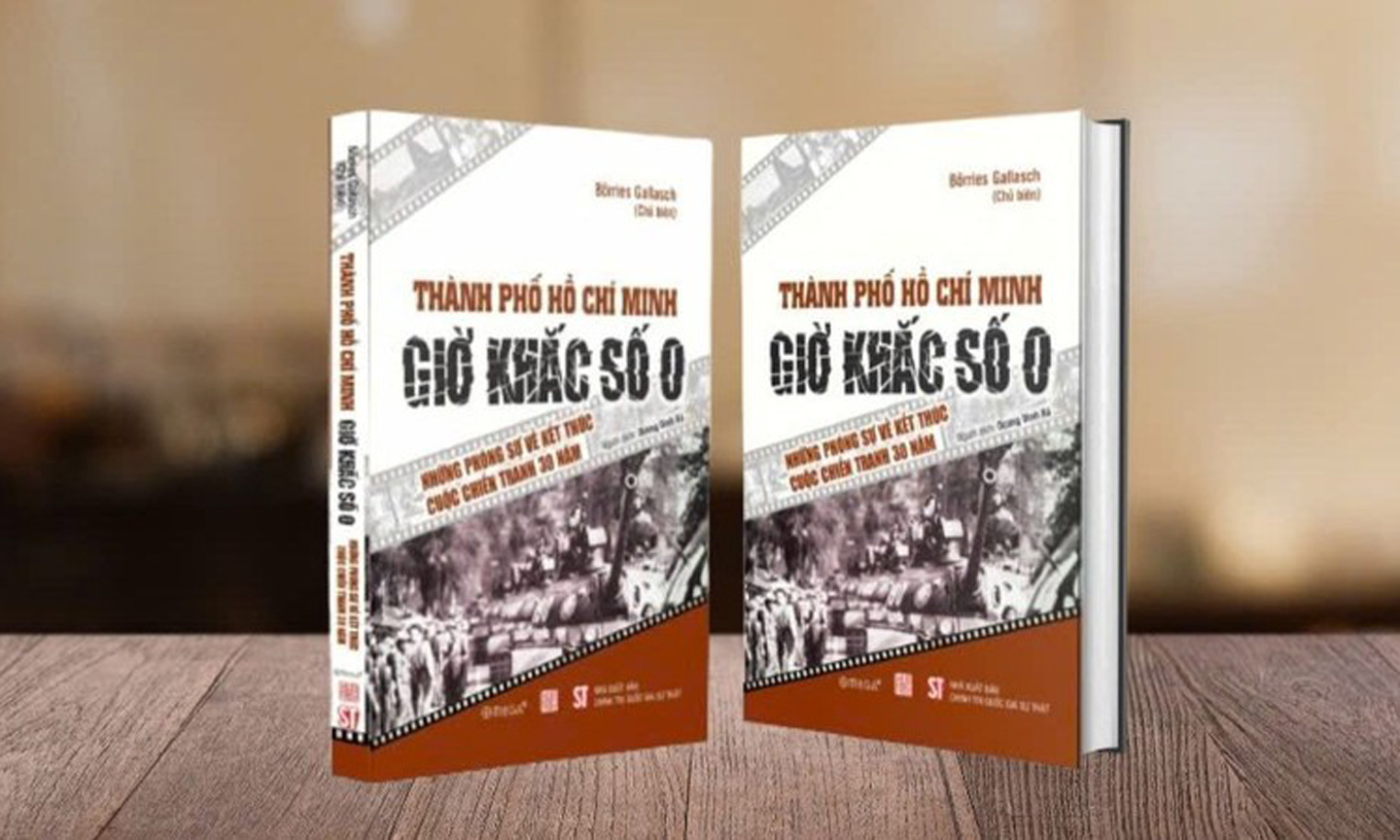Book features Western journalists' reports on national reunification moments
ABO/NDO- On the occasion of the 50th anniversary of the complete liberation of the South and the national reunification (April 30, 1975 - 2025), the Su That (Truth) National Political Publishing House introduces the book titled "Ho Chi Minh City - The Zero Hour: Reports on the end of the 30-year war" to readers.
The book is a vivid, authentic, and emotional chronicle of the historic moment when the war ended for the national reunification at 11:30 AM on April 30, 1975.
The Spring General Offensive and Uprising in 1975 marked the maturation phase of the entire anti-American resistance war .It was the result of the joint efforts among the forces and elements that created the ultimate power of the Vietnamese people in the resistance for liberation.
This was a glorious victory of immense international significance and profound historical impact. The 30-year war in Vietnam ended on April 30, 1975, marking a historical turning point not only for the Vietnamese people but for the entire world.
 |
| The book is a chronicle of the historic moment when the resistance war ended for the national reunification. |
With more than 200 pages, the book features reports from several Western journalists who were directly present in Vietnam during those historic days.
They witnessed the Liberation army forces marching into the south, bringing with them the unwavering spirit that "the Vietnamese nation is one" and the confidence of inevitable victory. They saw the chaotic scenes of the American-organised evacuation, with helicopters flying out of Saigon, leaving behind a devastated city. Just a week later, they saw a different Saigon, which was calm, orderly, and full of symbols of a new era.
One of the remarkable features of the book is the way the journalists describe the change of the people and the atmosphere in the city before and after April 30, 1975. These are the Liberation Army soldiers in their green military uniforms and rubber sandals—"Uncle Ho’s sandals"—talking openly with the locals.
There are images of schoolgirls in their white Ao Dai (traditional long dress), mothers, and family members embracing and crying on the day of reunification. After the initial days of anxiety, Saigon people had returned to their everyday lives despite fully awaring that a long and challenging journey to rebuild the country still lay ahead.
Besides the personal stories, the book reflects a profound truth: Vietnam’s victory was not merely the triumph of an ideology or a military force but the victory of an entire nation, where people who had endured too much loss, separation, and pain to reclaim independence and freedom.
The soldiers who went to the south did not only bring peace, independence, and freedom to the Vietnamese people but also reconnected with their families and relatives, who had been separated by war for decades. The moment of reunion with parents and siblings after so many years apart became one of the symbols of peace and national unity.
With the perspective of outsiders who had the chance to witness firsthand these historical moments, this is a valuable documentary book, deeply immersed in the spirit of the era. This book is not only for readers interested in Vietnamese history but also for those who want to gain a deeper understanding of the transformation of a nation after the war, as well as the pain, the joy, and the hopes for a better future.
(Source: NDO)
 về đầu trang
về đầu trang







